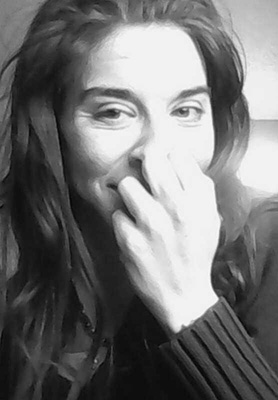 A guest blog post by poet Adina Burke about the Minnesota State Fair:
A guest blog post by poet Adina Burke about the Minnesota State Fair:
I’ll be honest, I haven’t been to the fair in some time now, in part because of the ongoing pandemic, as well as the sensory overload that is the supposed “Great Get Together.” I find that there’s a lack of accessibility in a lot of respects in terms of what rides and experiences I can take part in. And yet there’s a stark juxtaposition because I look into the sea of people, and suddenly I find people who look like me and are encountering the same issues and I smile. In fact, apart from stuffing my face with cheese curds, I spend the majority of my time at the fair people watching. There’s nothing like a reflection of yourself at such a big event to pull you back and reel you in.
I work with the Minnesota Council on Disability (MCD) during the fair and other events for this reason. At Pride, posters read “Treat people like people,” and while it should not be a novel concept–or seems obvious–for so many abled-bodied people disability is a non-issue, and it really shouldn’t be. Aging, especially in a Capitalist Western society, is disabling, and I am part of a minority group you can join at any time. If that sounds vaguely threatening, I don’t mean it as such. It is simply a statement of fact. I learn so much from those that stop by to hear me recite my poetry or those that simply pop by the MCD booth to learn more about our fight for equity. Equality is an oversimplification of what disability rights and activism is, I find. You’re free to disagree, of course.
I am immersed with the disability community, both in my day-to-day life and at this great get together that we call the Minnesota State Fair, because community is as vital to survival as the aforementioned cheese curds are to my fair attending experience. I learn about how to look outside of myself and see disability as the communal experience that it is. Many of us need a community to get our day-to-day tasks done, whether it be caregivers, community leaders, or benefits given to us by the function of the community that lies within governmental assistance. Of course, knowing how I choose to frame and see disability in the societal model, I’d argue that everyone–regardless of disability status or lack thereof–has to rely on community to survive. And it is in this framework that I see both the pitfalls and strength that Minnesota has within the disability rights movement. The fair is a greater illustration of this due to the meshing of so many people and mixture of perspectives. I have the opportunity to learn about accessibility through watching others like me and unlike me navigate the fair and how it is they accomplish what they wish to during the delightful and sometimes disorienting event that is the state fair.
It is a time not only to get together, but to reflect upon true inclusion and what that looks like, not only on a community level, but also on an individual level. This year at the fair as you navigate through the long lines and brave the heat of a late summer day, I implore you to pause even just for a moment and ask yourself “How can I bring community to my peers?” I invite you to stop by the Minnesota Council on Disability booth to learn more about the current issues within disability rights and access, as well as the steps the organization is taking to continue the fight as they approach fifty years of growth, change, and progress. After all, what good is a get together if we can’t all participate?
Adina has also written a poem on the fair.